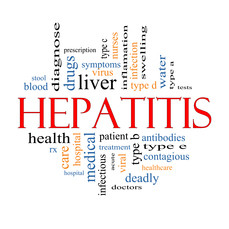
Pubic lice are tiny insects that can crawl from the pubic hair of one person to the pubic hair of another person during sexual contact. People can also catch pubic lice from infested clothing, towels and bedding. Once they are on a person’s body, the insects live by sucking blood from their host. Pubic lice are sometimes called “crabs” because when seen under a microscope they look like tiny crabs. They are the size of a pinhead when fully grown.
They are found in pubic hair around the scrotum, anus, vagina and penis. But they can also be found anywhere you have body hair. This includes the hair of the beard, moustache, eyelashes, eyebrows armpits, and sometimes the chest and abdomen, but not in hair on the head.
Crabs feed on blood, but they cannot pass on HIV. The lice can live away from the body for 24 hours so they could survive that long on clothes, bedding and towels.
Someone who has been exposed to pubic lice may not notice symptoms for 2-3 weeks but those symptoms include:
- Intense itching in genital areas or anus, especially at night. This is caused by an allergic reaction. When a lice bites the skin to feed on a person’s blood, their saliva from these bites causes this result.
- Inflammation and irritation in the infected areas, due to scratching.
- A skin reaction that is bluish-grey in color, from the bitesThese will be small, flat marks (maculae cerulea) that look like bruises. These can still exist months after the lice have been killed.
- Lesions (sores) in the genital area, due to bites and scratching.
- Black “powder” in your underwear. (Excrement from the lice.)
If you’ve been exposed to pubic lice, you may notice tiny tan to grayish-white insects crawling in the pubic hair. Lice are visible to the naked eye using a strong light. They look pale gray in color; they darken when swollen with blood. You may also see tiny oval-shaped, yellow to white blobs called nits clinging to the hair. Nits are about the size of a pinhead, and are the louse eggs. Nits can’t be easily removed from the hair with the fingers — “nit combs” made especially to remove the eggs are sold at drugstores and many grocery stores.
It’s unusual for pubic lice to create any serious health problems, but the itching can be very uncomfortable, and it’s easy to transmit pubic lice to others. The female louse survives an average of 25 to 30 days and each can lay 20 to 30 eggs. Lice can also live away from the body for 1 to 2 days. So it’s important to get properly diagnosed and treated, or it can take a while to get rid of them.
If a case of Public Lice is left untreated, it can lead to severely infected skin. When you scratch, you break skin, and that broken skin can be infected by bacteria, particularly that found in the refuse of the Pubic Lice themselves.
Additionally, you may also experience matted and foul-smelling pubic hair and infected blisters in the pubic area.
Interesting fact: if you have Pubic Lice and shave off your pubic hair, the lice will simply relocate to another areas of the body that Pubic Lice infest. If your personal desire is to shave the area, you could keep a closer watch on the success of your Rx. However, if you don’t plan to keep the area shaved then it’s a lot of needless effort that won’t help you heal faster.
If you think you may have pubic lice or if you have had a partner who may have pubic lice, see a doctor or gynecologist right away. If the doctor diagnoses pubic Lice, you may be prescribed medication or told to buy an over-the-counter medicine that kills the lice and their eggs.
There are over the counter drugs such as RID, A-200 and InnoGel, will that eliminate lice. Put the lotion all over your body and leave it on for 24 hours.
Topical creams or lotions containing permethrin (for example, Lyclear cream or Quellada lotion) and applied to the affected area are the most commonly recommended treatment.
However, Permethrin should not be applied to the eyelashes. If this area is affected, discuss an alternative treatment such as petroleum jelly.
Water-based treatments are also available for those with allergies and sensitive-skin.
Pubic lice can sometimes develop resistance to certain treatments. Your doctor or pharmacist can advise you on suitable alternatives if this occurs.
The important thing to remember is that the treatment you use may need to be repeated after 7 to 10 days to kill any lice you didn’t get the first time. And anyone who is treated for Pubic Lice should be tested for other STIs as well.
You will also need to dry clean or use very hot water and a hot dryer cycle to wash and dry all your bedding, towels or recently worn clothing to properly kill the lice and their eggs. Don’t forget about your luggage!
Anyone with whom you’ve had sexual contact in the last month should also check for Pubic Lice immediately.
Although condoms help protect against other STIs, a partner could still get Pubic Lice because the condom does not cover the entire pubic area.
Treatment for public Lice will be much more effective if few simple guidelines are consistently followed:
- The instructions on the medication you receive should be carefully read.
- The treatment should be repeated after one to two weeks. No treatment is effective against unhatched eggs. These Eggs hatch in 6–10 days, so a repeat will be necessary to prevent re-infection.
- Typically, the entire body from neck to toes should be treated, including the perineum and the anal area.
- Wash clothing, towels and bedding at the same time as treatment.
- The skin should be cool, clean and dry when the cream is applied.
- Avoid close personal intimate contact with partner(s) until you both are free of infection.









